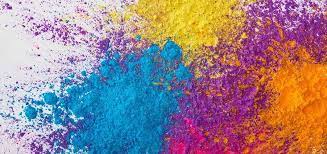PAINT, VARNISH, PIGMENTS AND SURFACE COATIING TESTING @BOMBAY TEST HOUSE PVT LTD.
Testing paints, varnishes, pigments, and surface coatings is important to ensure their quality, performance, and adherence to industry standards. Here are some key aspects of the testing protocol for these materials:
- Colour and Appearance Testing: Colour matching, colour consistency, and appearance evaluation are critical for paints, varnishes, pigments, and surface coatings. Visual assessment, spectrophotometry, or colorimetry are commonly used to measure colour properties.
- Film Thickness Measurement: The thickness of the applied coating layer is crucial for proper protection and aesthetics. Dry film thickness gauges or micrometers are used to measure the thickness of the coating film.
- Adhesion Testing: Adhesion testing determines the bond strength between the coating and the substrate. Techniques such as cross-cut or pull-off tests evaluate the coating's ability to adhere to the surface.
- Hardness Testing: Hardness testing helps determine the resistance of the coating to indentation or scratching. Methods like pencil hardness or Buchholz hardness tests assess the coating's hardness.
- Gloss and Sheen Measurement: Gloss and sheen characteristics affect the appearance of coated surfaces. Gloss meters or gloss measurement instruments assess the gloss level and sheen of the coating.
- Drying Time and Curing Evaluation: Drying time and curing evaluation determine the time required for the coating to dry or cure properly. Techniques like touch-dry time measurement, solvent resistance tests, or tape adhesion tests evaluate the drying and curing properties.
- Chemical and Solvent Resistance Testing: Coatings should exhibit resistance to chemicals, solvents, and other substances they may encounter in their intended applications. Exposure tests or immersion tests in specific chemicals or solvents assess the resistance of the coating.
- Weathering and UV Resistance Testing: Outdoor coatings need to withstand weathering and UV exposure. Accelerated weathering tests, such as UV exposure, salt spray testing, or humidity cycling, evaluate the coating's durability and resistance to environmental factors.
- Water Vapour Permeability Testing: Water vapour permeability testing helps determine the coating's ability to allow moisture to pass through. Techniques like the cup method or gravimetric method assess the coating's permeability to water vapor.
- Volatile Organic Compound (VOC) Testing: VOC testing measures the amount of volatile organic compounds emitted from the coating. This testing ensures compliance with environmental regulations and health standards.
- Quality Control and Compliance: Testing paints, varnishes, pigments, and surface coatings often involves following specific industry standards, such as those set by ASTM International or ISO. Compliance with these standards ensures consistent quality, performance, and adherence to regulations.
The specific testing methods and protocols may vary depending on the type of coating or material being tested and the intended application. Manufacturers or industry standards often provide guidelines for testing procedures and acceptance criteria.
Paint Testing Protocols
 Paint testing protocols involve a range of tests and procedures to evaluate the quality, performance, and compliance of paints. Here are some common paint testing protocols:
Paint testing protocols involve a range of tests and procedures to evaluate the quality, performance, and compliance of paints. Here are some common paint testing protocols:
- Color and Appearance Testing: Paints are tested for color accuracy, consistency, and appearance. This may involve visual assessment, color matching using spectrophotometry or colorimetry, and evaluation of gloss or sheen levels.
- Adhesion Testing: Adhesion testing determines the bond strength between the paint and the substrate. Techniques such as cross-cut or pull-off tests are used to assess the coating's ability to adhere to the surface.
- Film Thickness Measurement: The thickness of the paint film is measured to ensure it meets the required specifications. Dry film thickness gauges or micrometers are commonly used for this purpose.
- Drying Time and Curing Evaluation: Paints are tested to determine their drying time and curing characteristics. This involves assessing the time required for the paint to dry to touch, achieve full cure, or become resistant to solvents.
- Abrasion Resistance Testing: Abrasion resistance testing evaluates the ability of the paint to withstand wear and abrasion. Methods like Taber abrasion testing or falling sand tests are used to measure the paint's resistance to abrasion.
- Chemical Resistance Testing: Paints may undergo chemical resistance testing to assess their resistance to various chemicals, solvents, or cleaning agents. Exposure tests or immersion tests in specific chemicals can evaluate the paint's resistance.
- Weathering and UV Resistance Testing: Outdoor paints need to withstand weathering and UV exposure. Accelerated weathering tests, such as UV exposure, humidity cycling, or salt spray testing, are performed to evaluate the paint's durability and resistance to environmental factors.
- Scrub Resistance Testing: Scrub resistance testing assesses the ability of the paint to withstand scrubbing or cleaning without deteriorating. This is done using scrub resistance machines or manual scrub tests.
- Water Vapor Permeability Testing: Water vapor permeability testing helps determine the paint's ability to allow moisture to pass through. Techniques like the cup method or gravimetric method assess the paint's permeability to water vapor.
- Volatile Organic Compound (VOC) Testing: VOC testing measures the amount of volatile organic compounds emitted from the paint. This testing ensures compliance with environmental regulations and health standards.
- Quality Control and Compliance: Paint testing often involves following specific industry standards, such as those set by ASTM International or ISO. Compliance with these standards ensures consistent quality, performance, and adherence to regulations.
The specific tests and protocols may vary depending on the type of paint, its intended use, and the applicable regulations or standards. Manufacturers or industry organizations provide guidelines for testing procedures and acceptance criteria.
Pigments testing protocol
 Pigments testing protocols involve a series of tests and procedures to assess the quality, performance, and compliance of pigments. Here are some common testing protocols for pigments:
Pigments testing protocols involve a series of tests and procedures to assess the quality, performance, and compliance of pigments. Here are some common testing protocols for pigments:
- Color Analysis: Color analysis is performed to evaluate the color properties of pigments. This can include measuring color coordinates using spectrophotometry or colorimetry, comparing the color to a standard, or assessing color consistency and uniformity.
- Particle Size Analysis: Particle size analysis is conducted to determine the size distribution of pigment particles. Techniques such as laser diffraction, sedimentation analysis, or microscopy are used to measure particle size and assess the uniformity of particle size distribution.
- Chemical Composition Analysis: Chemical composition analysis is performed to identify the elemental or chemical composition of pigments. Techniques such as X-ray fluorescence (XRF), atomic absorption spectroscopy (AAS), or inductively coupled plasma (ICP) analysis can be used to quantify the concentrations of different elements present in the pigment.
- Lightfastness Testing: Lightfastness testing evaluates the resistance of pigments to fading or color changes when exposed to light. Techniques like accelerated weathering tests, such as xenon arc or carbon arc exposure, can simulate long-term light exposure and assess the pigment's lightfastness.
- Heat Stability Testing: Heat stability testing assesses the pigment's ability to withstand high temperatures without degradation or color changes. This can involve exposure to elevated temperatures in ovens or thermal aging tests.
- Chemical Resistance Testing: Pigments may undergo chemical resistance testing to evaluate their resistance to various chemicals, solvents, or environmental conditions. Exposure tests or immersion tests in specific chemicals can assess the pigment's resistance.
- Dispersion Testing: Dispersion testing evaluates the ability of the pigment to disperse evenly in a medium, such as a paint or ink formulation. Techniques like Hegman fineness of grind measurement or dispersion stability tests assess the pigment's dispersion characteristics.
- Hiding Power Testing: Hiding power testing determines the pigment's ability to provide coverage or opacity when used in a coating or paint. This can be evaluated using test methods that measure the contrast ratio between the pigment-coated and uncoated surfaces.
- Heavy Metal Testing: Pigments may undergo heavy metal testing to ensure compliance with regulations and standards. Techniques like atomic absorption spectroscopy or inductively coupled plasma-mass spectrometry (ICP-MS) can be used to quantify the levels of heavy metals present in the pigment.
- Quality Control and Compliance: Pigment testing often involves following specific industry standards or regulations, such as those set by ASTM International or regulatory bodies. Compliance with these standards ensures consistent quality, performance, and adherence to regulations.
The specific tests and protocols may vary depending on the type of pigment, its intended use, and the applicable regulations or standards. Manufacturers or industry organizations provide guidelines for testing procedures and acceptance criteria.
Varnish Testing Protocol
 Varnish testing protocols involve a series of tests and procedures to assess the quality, performance, and compliance of varnishes. Here are some common testing protocols for varnishes:
Varnish testing protocols involve a series of tests and procedures to assess the quality, performance, and compliance of varnishes. Here are some common testing protocols for varnishes:
- Viscosity Measurement: Viscosity testing is performed to determine the flow characteristics of varnishes. This helps assess their ease of application, processability, and suitability for different coating techniques. Various viscometers, such as rotational viscometers or Ford cups, are commonly used for viscosity measurements.
- Drying Time and Curing Evaluation: Varnishes are tested to determine their drying time and curing characteristics. This involves assessing the time required for the varnish to dry to touch, achieve full cure, or become resistant to solvents. Tests may include finger touch or solvent resistance tests.
- Film Thickness Measurement: The thickness of the applied varnish film is crucial for proper protection and aesthetics. Dry film thickness gauges or micrometers are used to measure the thickness of the varnish film.
- Adhesion Testing: Adhesion testing determines the bond strength between the varnish and the substrate. Techniques such as cross-cut or pull-off tests are used to assess the varnish's ability to adhere to the surface.
- Gloss and Sheen Measurement: Gloss and sheen characteristics affect the appearance of varnished surfaces. Gloss meters or gloss measurement instruments assess the gloss level and sheen of the varnish film.
- Chemical and Solvent Resistance Testing: Varnishes may undergo chemical resistance testing to assess their resistance to various chemicals, solvents, or cleaning agents. Exposure tests or immersion tests in specific chemicals can evaluate the varnish's resistance.
- Scratch and Abrasion Resistance Testing: Scratch and abrasion resistance testing evaluates the varnish's ability to withstand scratching or abrasion. Methods like Taber abrasion testing or falling sand tests are used to measure the varnish's resistance to abrasion.
- Weathering and UV Resistance Testing: Outdoor varnishes need to withstand weathering and UV exposure. Accelerated weathering tests, such as UV exposure, humidity cycling, or salt spray testing, are performed to evaluate the varnish's durability and resistance to environmental factors.
- Chemical Composition Analysis: Chemical composition analysis is performed to identify the components present in the varnish. Techniques such as Fourier transform infrared spectroscopy (FTIR), gas chromatography-mass spectrometry (GC-MS), or nuclear magnetic resonance (NMR) can be used to analyze the varnish's chemical composition.
- Quality Control and Compliance: Varnish testing often involves following specific industry standards, such as those set by ASTM International or ISO. Compliance with these standards ensures consistent quality, performance, and adherence to regulations.
The specific tests and protocols may vary depending on the type of varnish, its intended use, and the applicable regulations or standards. Manufacturers or industry organizations provide guidelines for testing procedures and acceptance criteria.
Surface coating testing protocol
 Surface coating testing protocols involve a series of tests and procedures to evaluate the quality, performance, and compliance of surface coatings. Here are some common testing protocols for surface coatings:
Surface coating testing protocols involve a series of tests and procedures to evaluate the quality, performance, and compliance of surface coatings. Here are some common testing protocols for surface coatings:
- Adhesion Testing: Adhesion testing determines the bond strength between the coating and the substrate. Techniques such as cross-cut or pull-off tests are used to assess the coating's ability to adhere to the surface.
- Thickness Measurement: The thickness of the applied coating layer is crucial for proper protection and aesthetics. Dry film thickness gauges or micrometers are used to measure the thickness of the coating film.
- Hardness Testing: Hardness testing helps determine the resistance of the coating to indentation or scratching. Methods like pencil hardness or Buchholz hardness tests assess the coating's hardness.
- Impact Resistance Testing: Impact resistance testing evaluates the coating's ability to withstand impact or deformation. This can involve tests such as falling weight impact tests or impact pendulum tests.
- Abrasion Resistance Testing: Abrasion resistance testing assesses the coating's ability to resist wear and abrasion. Techniques like Taber abrasion testing or falling sand tests are used to measure the coating's resistance to abrasion.
- Chemical Resistance Testing: Coatings are tested for their resistance to various chemicals, solvents, or environmental conditions. Exposure tests or immersion tests in specific chemicals can evaluate the coating's resistance.
- Corrosion Resistance Testing: Corrosion resistance testing assesses the coating's ability to protect the underlying substrate from corrosion. Salt spray testing, humidity chamber testing, or cyclic corrosion tests can be used to evaluate corrosion resistance.
- Weathering and UV Resistance Testing: Outdoor coatings need to withstand weathering and UV exposure. Accelerated weathering tests, such as UV exposure, humidity cycling, or salt spray testing, evaluate the coating's durability and resistance to environmental factors.
- Gloss and Sheen Measurement: Gloss and sheen characteristics affect the appearance of coated surfaces. Gloss meters or gloss measurement instruments assess the gloss level and sheen of the coating.
- Water Vapor Permeability Testing: Water vapor permeability testing helps determine the coating's ability to allow moisture to pass through. Techniques like the cup method or gravimetric method assess the coating's permeability to water vapor.
- Volatile Organic Compound (VOC) Testing: VOC testing measures the amount of volatile organic compounds emitted from the coating. This testing ensures compliance with environmental regulations and health standards.
- Quality Control and Compliance: Surface coating testing often involves following specific industry standards, such as those set by ASTM International or ISO. Compliance with these standards ensures consistent quality, performance, and adherence to regulations.
The specific tests and protocols may vary depending on the type of coating, its intended use, and the applicable regulations or standards. Manufacturers or industry organizations provide guidelines for testing procedures and acceptance criteria.

Testing
Read More
Inspection
Read More
Certification
Read MoreTesting Services
- Drugs & Pharmaceutical Testing
- Cosmetics & Essential Oils Testing
- Medical Devices Testing
- Ayush - Ayurvedic Drug Testing
- Food Products Testing
- Agri Commodities Testing
- Fertilizers and Soil Testing
- Animal Food & Feed Testing
- Water - Drinking Water & Effluent Water Testing
- Industrial Oils and Lubricants & Petroleum Products Testing
- Coal & Coke and Solid Fuels Testing
- Ores & Minerals Testing
- Metals & Alloys Testing
- Plastics, Polymer, Rubber & Rubber Products Testing
- Resins & Adhesives Testing
- Paints, Varnish, Pigments & Surface Coating Testing
- Glass & Ink, Paper & Pulp Testing
- Industrial & Fine Chemicals Testing
- Dyes, Acids and Solvents Testing
- Soaps, Detergents & Toiletries Testing
- Packaging & Packaging Products Testing
- Gold & Silver Assaying & Hallmarking
- Cement, Concrete & Building Materials Testing
- Pollution and Environmental Studies
- Microbiological Assays. Etc.,









